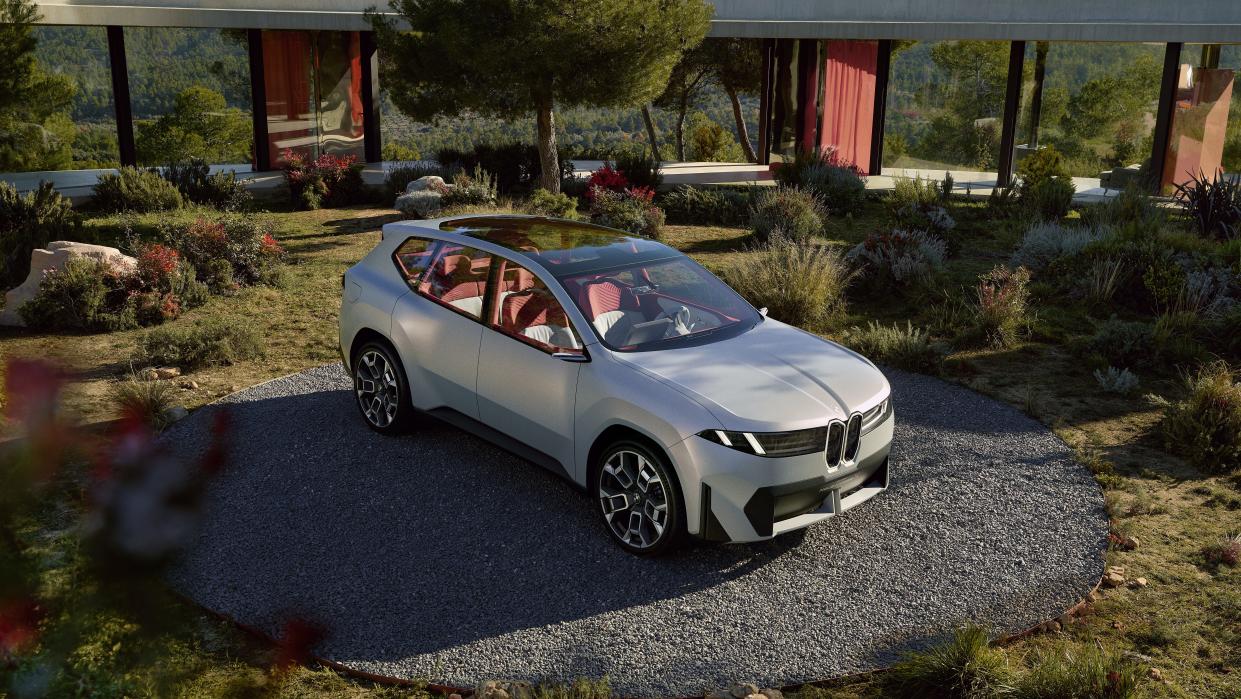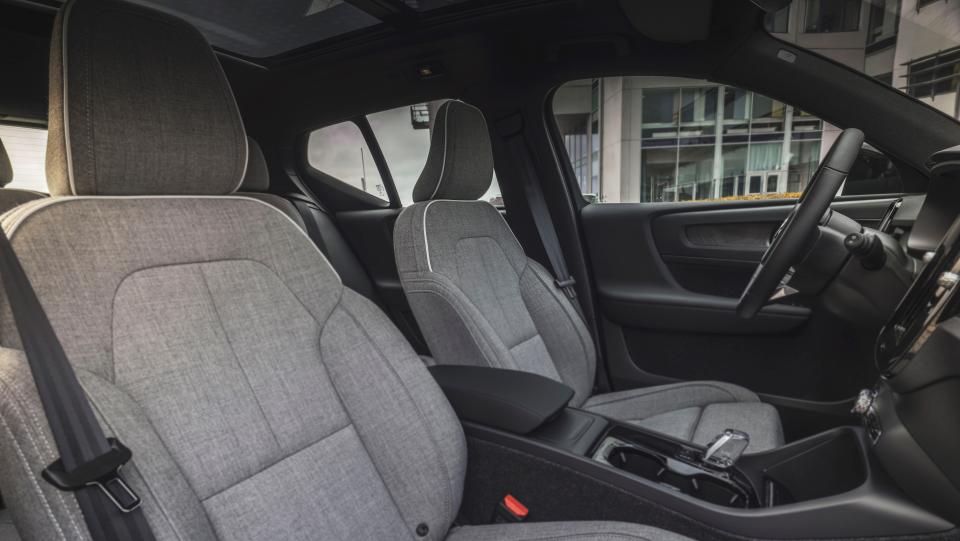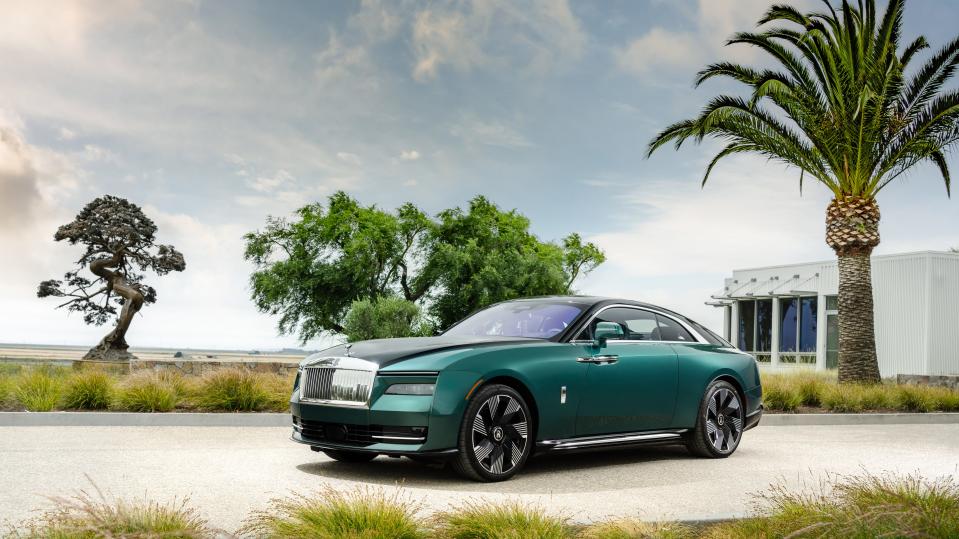From Vegan Leather to Silence: How Luxury Cars Are Becoming More Eco-Conscious From the Inside Out

BMW unveiled its Vision Neue Klasse X on Thursday, its newest all-electric concept SUV. It’s very likely the template for the upcoming iX3, an all-electric version of BMW’s X3, a compact luxury crossover that is among the best-selling cars of its type in the world. The Vision Neue Klasse X, in other words, is a big deal—a future cornerstone of one of the world’s best-selling luxury brands, the kind of volume luxury car that many people will be seeing a lot of on the streets in the years to come.
On the outside, there is the iconic BMW grille, this time in three dimensions; the Vision Neue Klasse X is also a sleeker vehicle than the current X3, to account for better aerodynamics that EVs demand to expand range; and there is a lot of glass, because EVs have helped put a new emphasis on the view from inside. The marque also said the interior would feature a new material called Verdana, which BMW calls “completely plant-based, mineral-based, and petroleum-free.” Marine plastics, like those from fishing nets, account for 30 percent of some secondary components, according to the automaker.
More from Robb Report
Genesis Just Unveiled Its First Full-Size Electric SUV Concept
Ferrari Collector David Lee on His Rolex Daytona, the Perfect Martini, and His Newest Prancing Horse
Both of those are efforts to be more environmentally friendly, of course, and BMW says it’s also thinking about the full life cycle of the vehicle, even though this is just a concept. “The choice of materials and construction method enable easier disassembly of components and improved recyclability,” BMW said in a press release. “The side skirts and front and rear apron attachments are also produced from recycled mono-materials.”

All this represents a still-new sideline for luxury automakers, telling its customers that its cars not only look good, feel good, and go fast, but also contribute a little less destruction to the environment—via their batteries but also through manufacturing materials. Volvo, long a leader in this space, says that its all-electric EX30 is made of more recycled material than any Volvo ever, including the use of recycled denim in parts of its interior. Lexus, meanwhile, released the LF-ZC concept in 2023 for production launch in 2026, a car that featured extensive use of bamboo, a so-called “circular resource” because it grows relatively quickly, absorbs a lot of carbon dioxide, and can be reliably harvested. Rolls-Royce, being Rolls-Royce, has emphasized the quiet: Its all-electric Spectre is underpinned by an all-aluminum architecture, which adds stiffness to the car but also allows for some new packaging ideas.
“A channel has been created for wiring and climate control pipework between the battery and the floor, with the battery mounted underneath, providing a perfectly smooth underfloor profile,” Rolls-Royce said in a release. “This not only creates a low seating position and enveloping cabin but realises a secondary function for the battery—almost 700kg of sound deadening.”
A quiet cabin has long been a Rolls-Royce trademark, given that it is still largely a car designed for passengers and not drivers, though the quietness of electric power means other luxury and ultra-luxury marques have begun to emphasize interior solitude in their EVs as well. Part of this is a marketing problem, as ride comfort—something EV upstart Lucid has staked a large part of its existence on—is an easier sell than sustainable materials, and part of it is also that the fundamental nature of selling cars has changed in the era of luxury EVs. Gone are the days when automakers could boast about how big and powerful their internal-combustion engines are. Enter the era of aerodynamic drag coefficients, an important new specification that relates directly to range, which now rivals horsepower as the headline number for new cars.

Even Tesla, which does not play by many conventional rules of marketing, isn’t immune, claiming in 2021 that its new Model S had the lowest drag coefficient of any production car. Lowering the drag coefficient further requires a lot of compromises for any automaker, in terms of packaging and styling, meaning the gloriously boxy luxury cars of the 1980s might be the last of their kind. It’s also enormously expensive, as any car designer will tell you, because any small change to the car’s profile could mean completely upending what’s going on under the hood. Changes in materials, on the other hand, are relatively less disruptive and expensive, which is one reason why luxury automakers are experimenting with bamboo, recycled denim, recycled plastic, and other non-traditional materials.
One final frontier in this regard is leather, which has been the standard interior material for luxury cars for decades, along with an almost infinite number of other luxury products. Alternatives have been proposed, as in 2019, when Bentley said it was experimenting with a material called Vegea, a “vegan leather” that is made of “grape skins, seeds, and stalks that remain after crushing grapes.” More recently, automakers have focused more on “sustainable leather,” or leather sourced in such a way that tries to respect animal welfare and not overly tax water resources.
Porsche, along with its parent Volkswagen Group, said last year it would be joining the “Leather Working Group,” an England-based nonprofit that certifies leather supply chains. “At the beginning of 2022, Porsche created material-specific specifications for leather,” the marque said in a press release. “The specifications have been mandatory for all new contract awards for leather suppliers since April 2022. Among other things, they must disclose the country of origin of the raw material and be reviewed by external auditors against a leather-specific sustainability standard such that offered by LWG.”
BMW also said it joined the Leather Working Group in 2022. The German marque followed Bentley, which was the group’s “first-ever member” in 2021. That suggests that leather will still be in luxury cars for quite some time, alongside that recycled plastic, bamboo, denim—and other alternative materials that may still come.
Best of Robb Report
Sign up for Robb Report's Newsletter. For the latest news, follow us on Facebook, Twitter, and Instagram.

